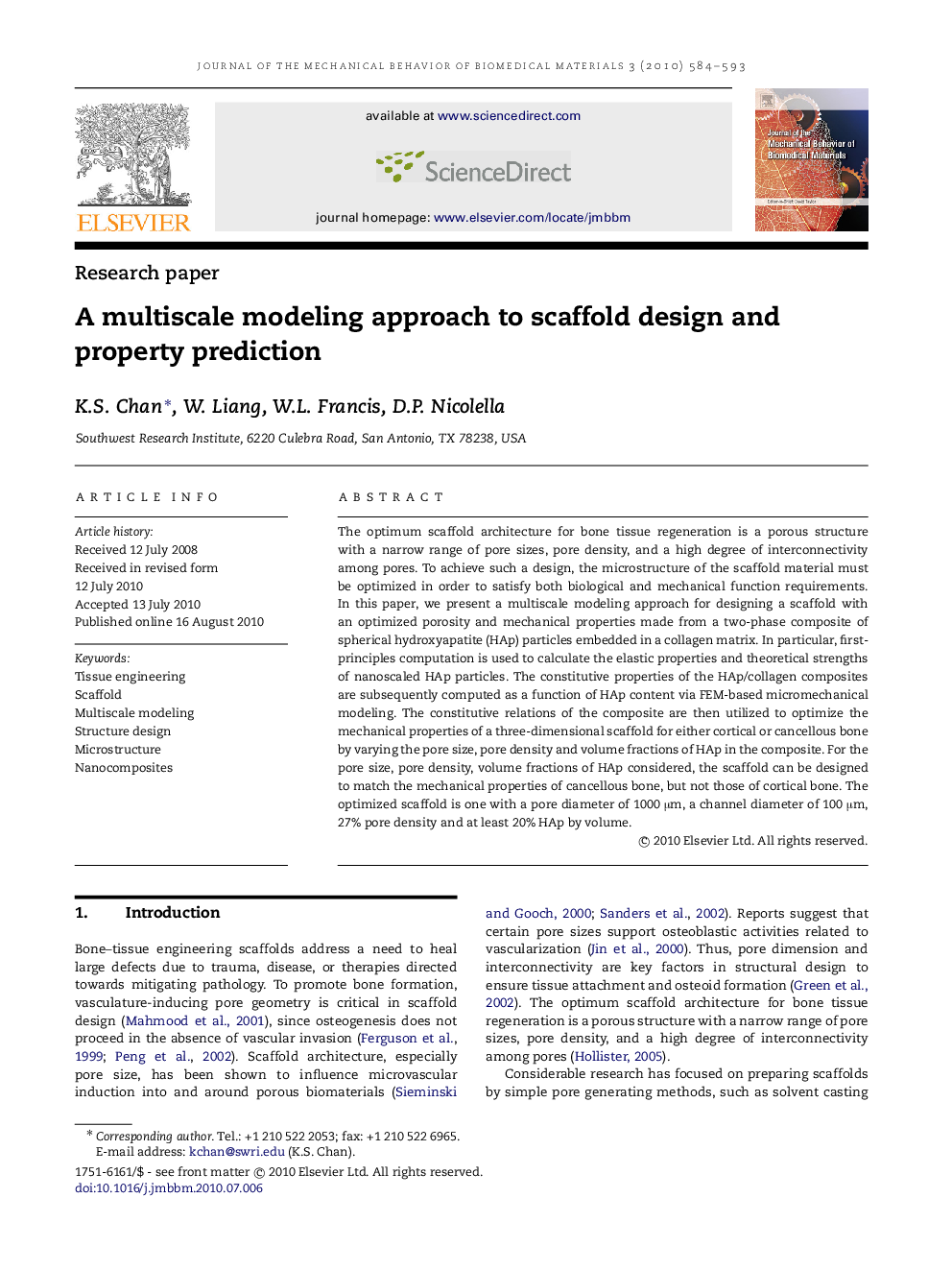| کد مقاله | کد نشریه | سال انتشار | مقاله انگلیسی | نسخه تمام متن |
|---|---|---|---|---|
| 811367 | 1469149 | 2010 | 10 صفحه PDF | دانلود رایگان |

The optimum scaffold architecture for bone tissue regeneration is a porous structure with a narrow range of pore sizes, pore density, and a high degree of interconnectivity among pores. To achieve such a design, the microstructure of the scaffold material must be optimized in order to satisfy both biological and mechanical function requirements. In this paper, we present a multiscale modeling approach for designing a scaffold with an optimized porosity and mechanical properties made from a two-phase composite of spherical hydroxyapatite (HAp) particles embedded in a collagen matrix. In particular, first-principles computation is used to calculate the elastic properties and theoretical strengths of nanoscaled HAp particles. The constitutive properties of the HAp/collagen composites are subsequently computed as a function of HAp content via FEM-based micromechanical modeling. The constitutive relations of the composite are then utilized to optimize the mechanical properties of a three-dimensional scaffold for either cortical or cancellous bone by varying the pore size, pore density and volume fractions of HAp in the composite. For the pore size, pore density, volume fractions of HAp considered, the scaffold can be designed to match the mechanical properties of cancellous bone, but not those of cortical bone. The optimized scaffold is one with a pore diameter of 1000 μm, a channel diameter of 100 μm, 27% pore density and at least 20% HAp by volume.
Journal: Journal of the Mechanical Behavior of Biomedical Materials - Volume 3, Issue 8, November 2010, Pages 584–593